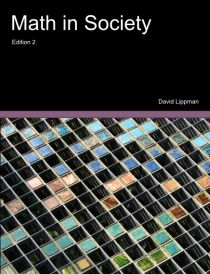Section5.6Chapter 5 Exercises
-
Use the results of Election 1 as shown in the table to answer the questions below.
Number of votes 26 25 15 34 1st A B B C 2nd C A C A 3rd B C A B Table5.35Preference Table for Election 1 - How many total voters were there?
- True or False: a total of 26 voters preferred Candidate A over Candidate B.
- Who is the plurality winner? Does that candidate have a majority?
- Calculate the winner of Election 1 using the Borda count.
-
The table below shows presidential election results for Florida in 2000, between George W. Bush, Al Gore, and Green Party candidate Ralph Nader. The vote totals, given as percentages, are the real results. 7Simplified to exclude candidates with less than 1% of the vote. The voters' second and third choices are educated guesses based on what we know of voters' opinions during that election.
Percent of votes 49.2 49.1 1.7 1st Bush Gore Nader 2nd Gore Nader Gore 3rd Nader Bush Bush Table5.36Preference Table for 2000 U.S. Presidential Election in Florida - In this example, does a Condorcet candidate exist? If so, who is it?
- What (if anything) does this election tell us about the plurality method and the Condorcet criterion?
Calculate the winner of Election 2 (shown below) using IRV.
Number of votes 17 15 5 10 2 1 1st A B C C D D 2nd D C A D C B 3rd B A D B B A 4th C D B A A C Table5.37Preference Table for Election 2 -
The table below shows the ballots for Election 3. It is the same as Election 2, except that some voters changed their first place votes from A to C.
Number of votes 5 12 15 5 10 2 1 1st C A B C C D D 2nd A D C A D C B 3rd D B A D B B A 4th B C D B A A C Table5.38Preference Table for Election 3 - Calculate the winner of Election 3 using IRV.
- Compare Election 2 and Election 3. Do these elections show IRV violating one of the fairness criteria? If so, which one, and why?
